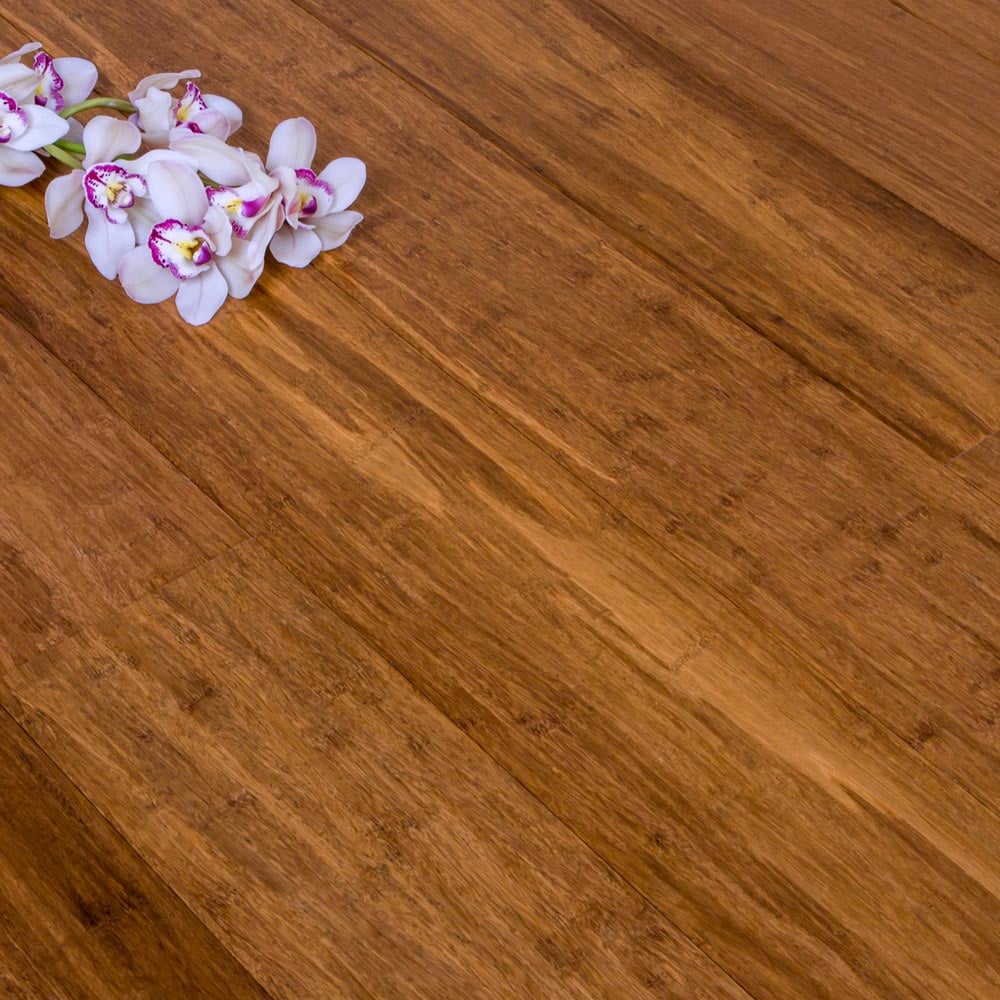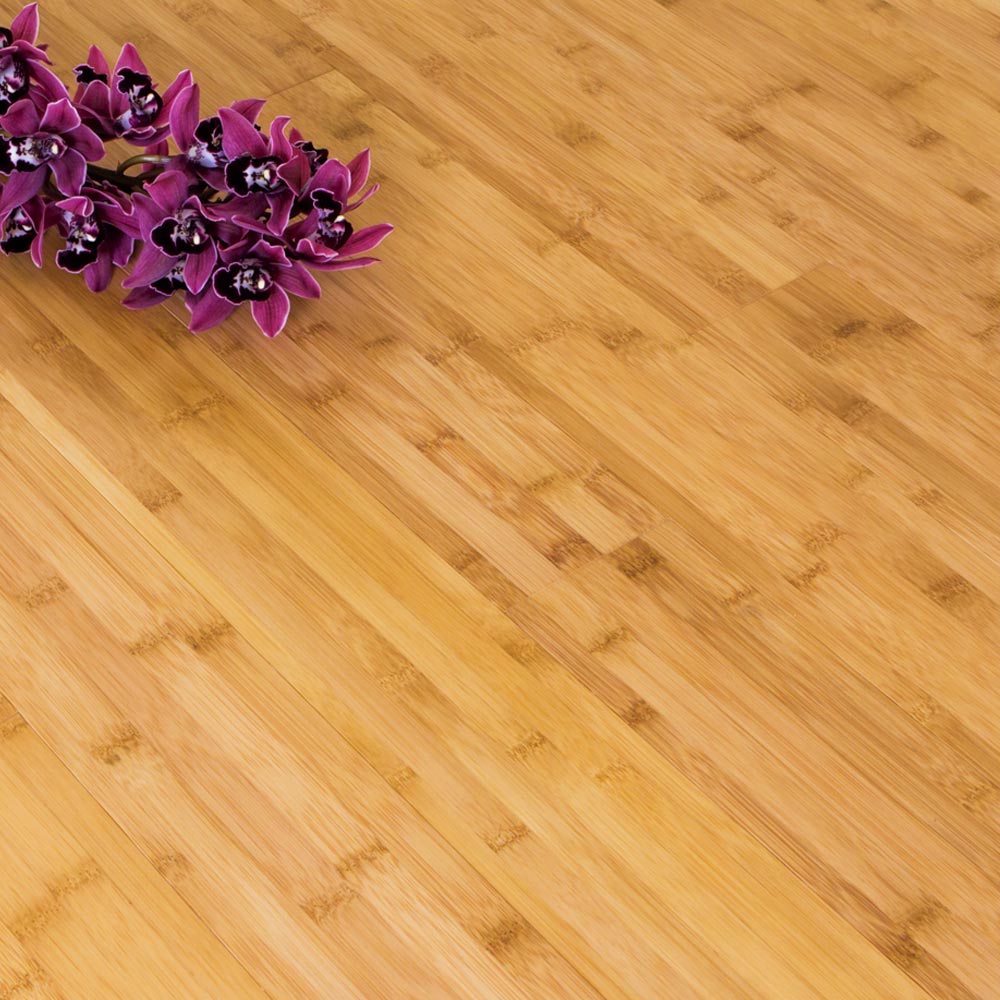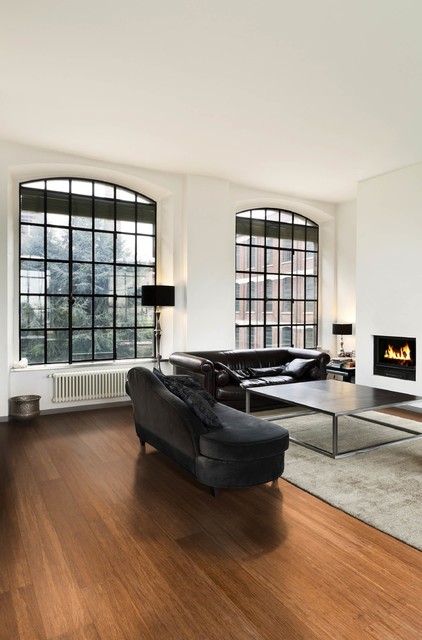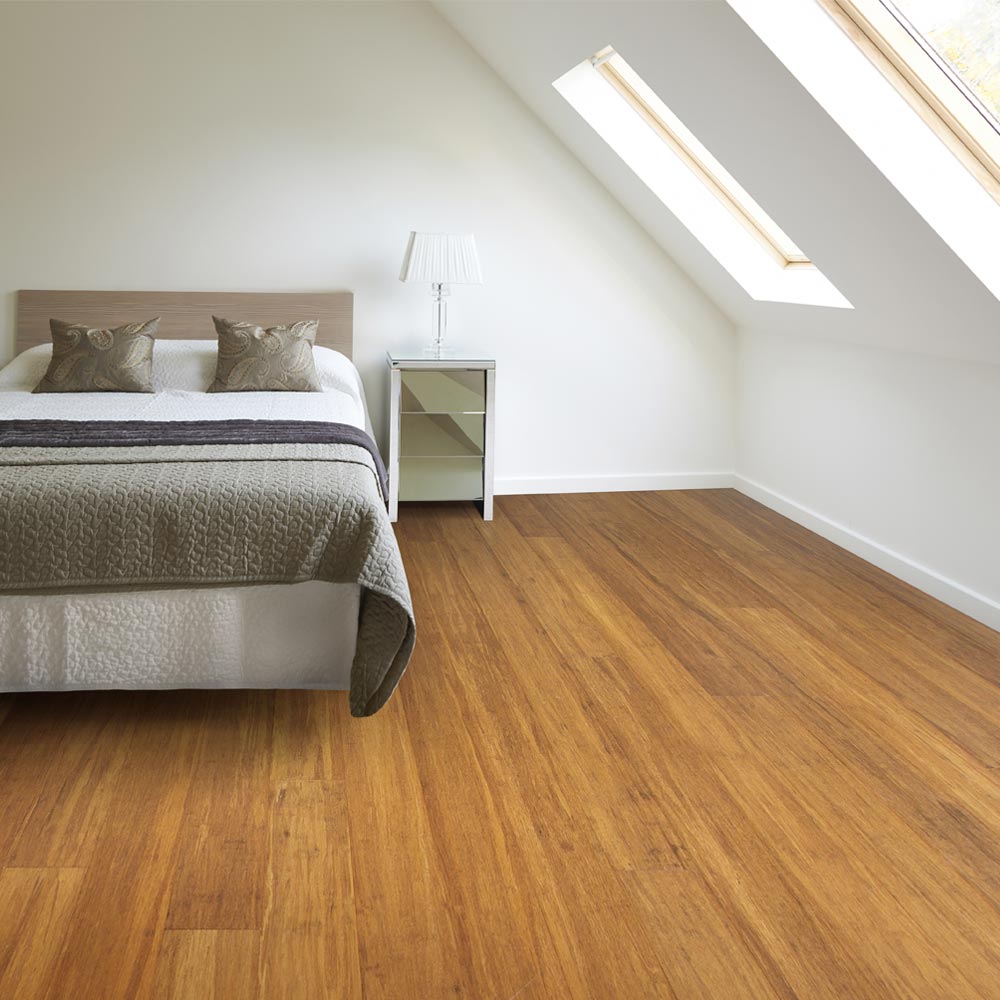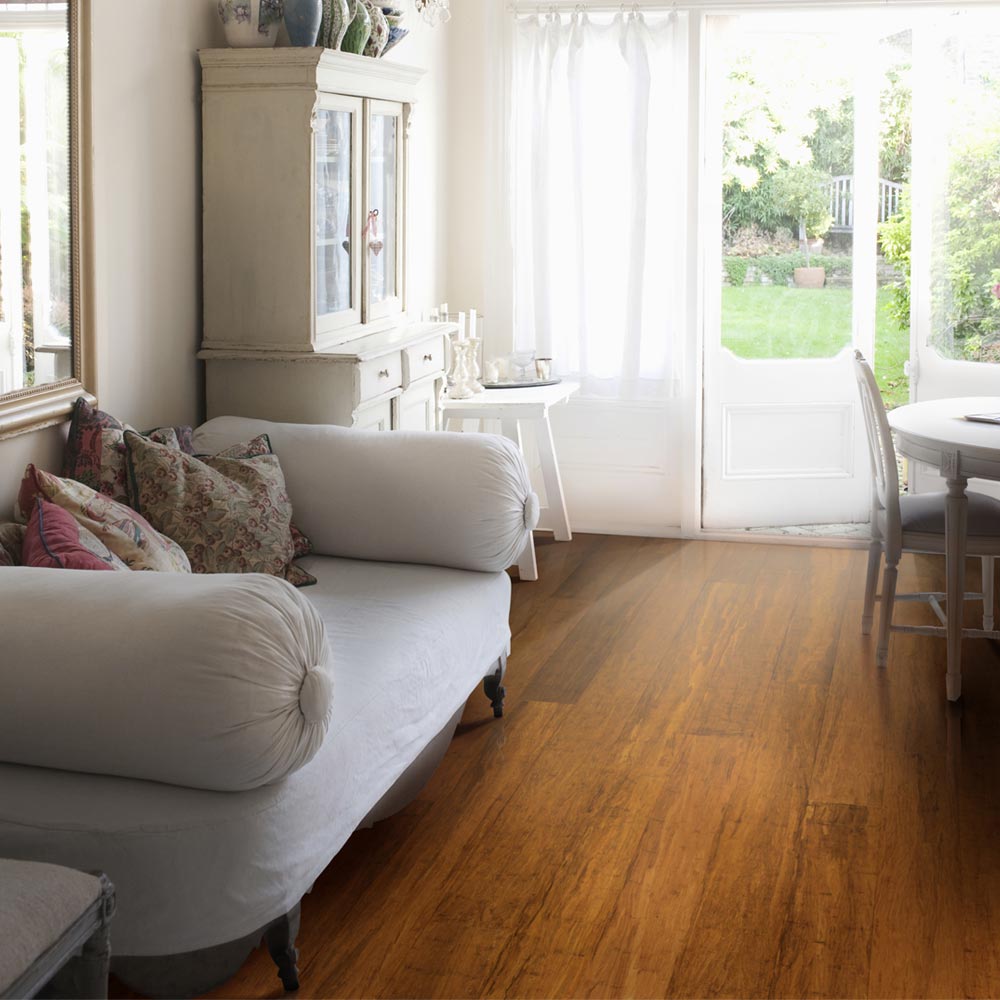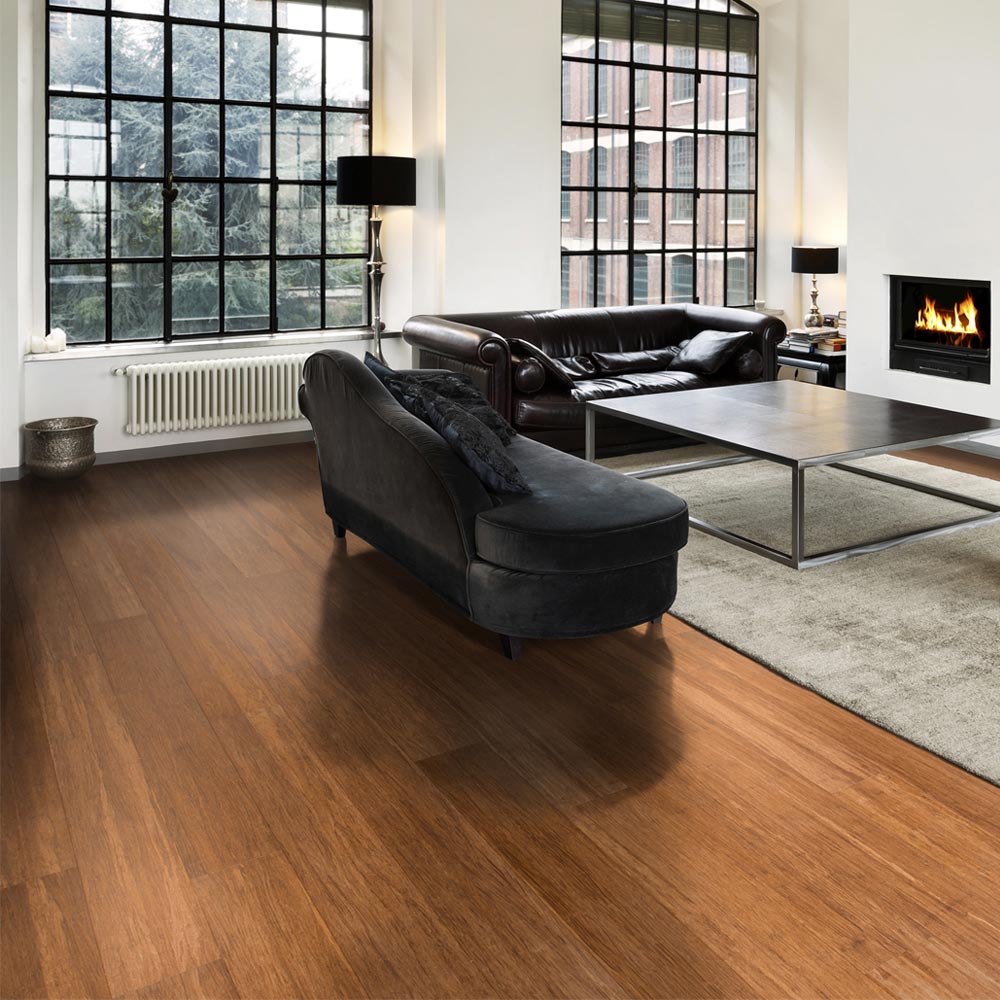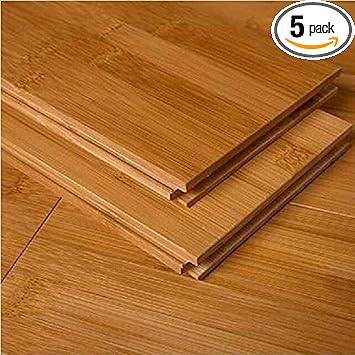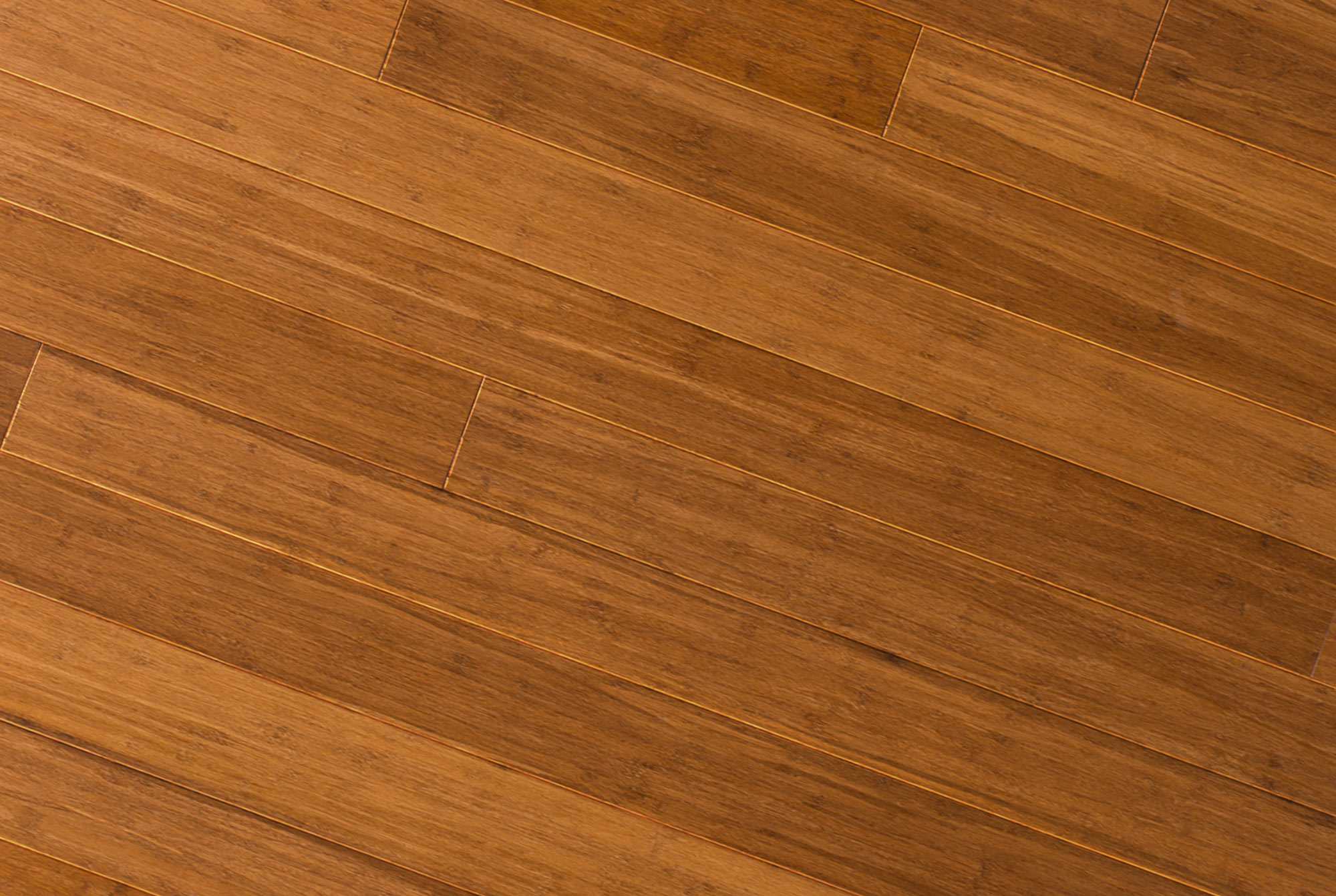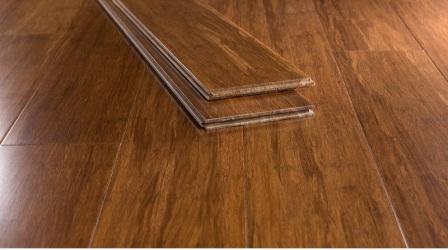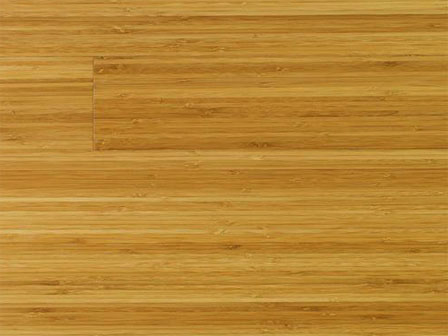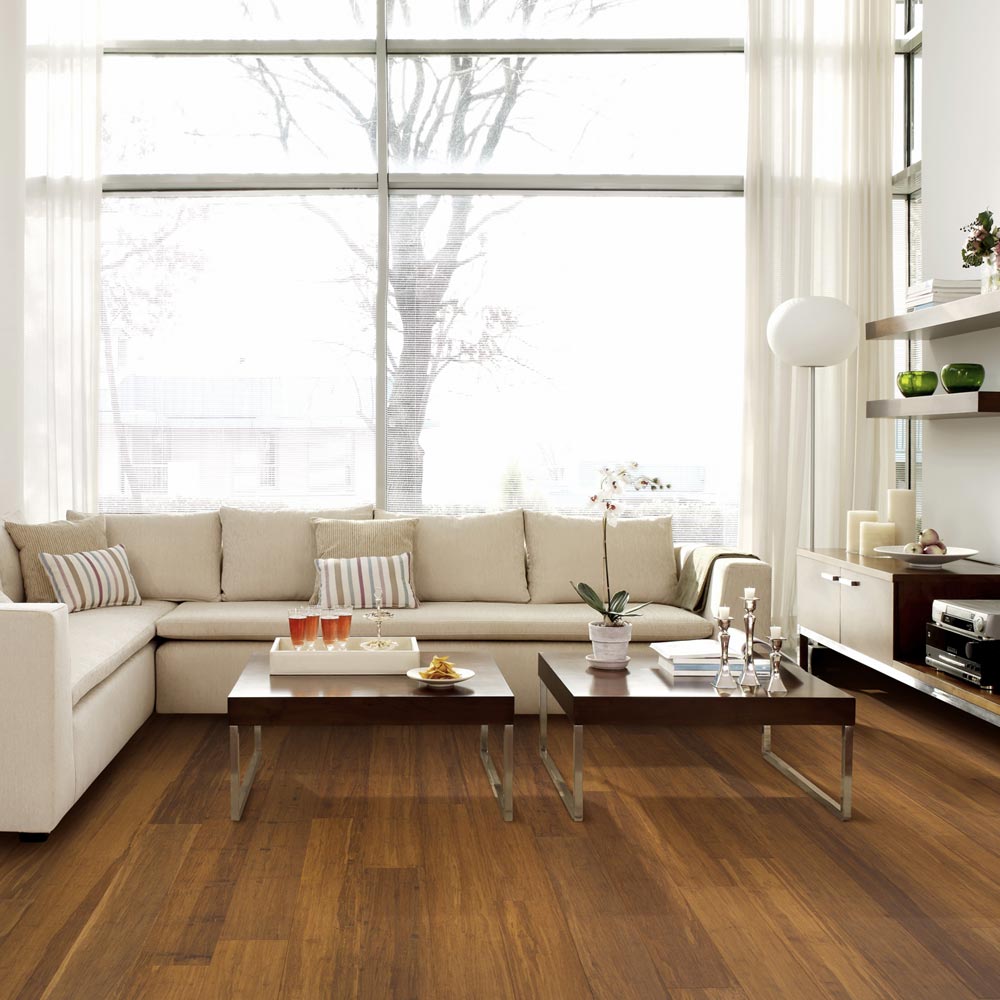What is Carbonised Bamboo Flooring?
Carbonised bamboo flooring is an increasingly popular flooring option due to its aesthetic appeal and eco-friendly properties. Unlike traditional bamboo flooring, carbonised bamboo undergoes a specific heating process that changes its color and properties. This transformation gives the flooring a richer, darker hue and different structural characteristics.
- Definition and Process: Carbonisation involves heating the bamboo under controlled conditions. The heat causes the sugars in the bamboo to caramelize, giving the material a darker color. This process not only changes the appearance but can also alter the hardness of the bamboo.
- Types of Carbonised Bamboo: There are two main types: horizontal and vertical. Horizontal carbonised bamboo shows the natural growth rings and grain of the bamboo, giving it a more textured appearance. Vertical carbonised bamboo, on the other hand, has a more uniform and consistent look.
- Color Variations: The carbonisation process can produce a range of colors from light amber to rich coffee tones. The specific hue depends on the duration and intensity of the heating process, allowing for a variety of design options to suit different tastes and interior styles.
- Structural Changes: While the carbonisation process primarily affects color, it can also impact the bamboo’s hardness. Carbonised bamboo tends to be softer than non-carbonised bamboo due to the breakdown of cellulose fibers during heating. This makes it crucial to consider the placement of carbonised bamboo flooring in areas with heavy foot traffic.
- Applications: Carbonised bamboo flooring is versatile and can be used in various residential and commercial settings. Its warm, rich tones make it an attractive option for living rooms, bedrooms, and even kitchens. However, due to its potential softness, it might not be ideal for high-traffic areas like hallways and entryways.
- Historical Context: Bamboo has been used for flooring for centuries in Asia, but carbonised bamboo is a relatively modern innovation. The development of carbonised bamboo flooring has been driven by advances in manufacturing technology and the growing demand for sustainable, eco-friendly building materials.

Benefits of Carbonised Bamboo Flooring
Carbonised bamboo flooring offers a range of benefits that make it an appealing choice for homeowners and designers. Its unique properties and sustainable nature contribute to its growing popularity.
Aesthetic Appeal: One of the most significant benefits of carbonised bamboo flooring is its visual appeal. The carbonisation process gives the bamboo a rich, warm color that can enhance the ambiance of any room. The variety of shades available, from light amber to deep coffee, allows for customization to match different design preferences.
Sustainability: Bamboo is a rapidly renewable resource, making it an eco-friendly flooring option. Unlike hardwood trees that take decades to mature, bamboo can be harvested in as little as five years. Additionally, bamboo grows quickly and regenerates without the need for replanting, which helps conserve natural resources.
Durability: Despite the softening effect of the carbonisation process, carbonised bamboo flooring is still relatively durable. It can withstand everyday wear and tear, making it suitable for various residential settings. With proper care, carbonised bamboo floors can last for many years, providing long-term value.
Ease of Maintenance: Carbonised bamboo flooring is relatively easy to maintain. Regular sweeping or vacuuming, along with occasional mopping with a damp cloth, is usually sufficient to keep the floors looking their best. Its smooth surface resists dust and allergens, making it a good choice for households with allergy sufferers.
Cost-Effective: Compared to traditional hardwood flooring, carbonised bamboo is often more affordable. It offers a high-end look at a lower price point, making it an attractive option for budget-conscious homeowners who don’t want to compromise on style or quality.
Eco-Friendly Manufacturing: The production of carbonised bamboo flooring typically involves fewer chemicals than traditional hardwood flooring. Many manufacturers use environmentally friendly adhesives and finishes, further reducing the ecological footprint of bamboo flooring.
Comparing Carbonised Bamboo to Other Flooring Options
Choosing the right flooring for your home involves considering various factors such as aesthetics, durability, maintenance, and cost. Carbonised bamboo flooring stands out in several ways compared to other popular flooring options like hardwood, laminate, and tile.
Aesthetic Comparison: Carbonised bamboo offers a unique look that differs from traditional hardwood. While hardwood floors come in a variety of species and colors, carbonised bamboo has a distinctive grain and warm tones resulting from the carbonisation process. This can provide a more exotic and modern appearance compared to the classic look of oak or maple.
Durability and Hardness: When it comes to durability, carbonised bamboo is generally softer than non-carbonised bamboo and some hardwoods due to the heat treatment process. However, it is still more durable than many softwoods. Laminate flooring, while not as natural-looking, can offer superior durability and resistance to scratches and dents, making it suitable for high-traffic areas.
Environmental Impact: Bamboo, including carbonised bamboo, is more sustainable than hardwood because it grows much faster and regenerates without replanting. Laminate flooring, while often cheaper, is typically made from synthetic materials that are less eco-friendly. Tile, although durable and easy to clean, involves significant energy consumption in its production.
Maintenance Needs: Carbonised bamboo flooring is relatively low-maintenance, requiring regular sweeping and occasional mopping. Hardwood floors may need periodic refinishing to maintain their appearance, which can be labor-intensive. Laminate floors are easy to clean but can be susceptible to water damage if not properly sealed. Tile floors are durable and easy to maintain but can be cold and hard underfoot.
Cost Considerations: Carbonised bamboo flooring is generally more affordable than high-end hardwood but can be more expensive than laminate. Tile can range widely in price depending on the material and design. Considering installation costs, bamboo and laminate are often more straightforward and less costly to install compared to tile, which can be labor-intensive.
Comfort and Feel: Bamboo and hardwood provide a warm and natural feel underfoot, which is often preferred in living areas and bedrooms. Laminate can feel harder and less natural due to its synthetic composition. Tile, while excellent for moisture-prone areas like bathrooms and kitchens, can be uncomfortable for long periods of standing and may require additional rugs or mats for comfort.
Installation Process for Carbonised Bamboo Flooring
Installing carbonised bamboo flooring is a straightforward process that can be done by professionals or experienced DIY enthusiasts. Understanding the steps involved can help ensure a successful and lasting installation.
Preparation and Planning: Before installation, it’s essential to acclimate the bamboo flooring to the room’s temperature and humidity. This typically involves leaving the flooring in the installation area for at least 48 hours. Ensuring the subfloor is clean, dry, and level is also crucial for a smooth installation process.
Gathering Tools and Materials: The necessary tools for installing carbonised bamboo flooring include a saw, tape measure, chalk line, rubber mallet, spacers, and a flooring nailer or stapler. Additional materials such as underlayment, adhesive, and finishing trims may also be required depending on the installation method.
Choosing an Installation Method: There are three main methods for installing carbonised bamboo flooring: nail-down, glue-down, and floating. The nail-down method involves securing the flooring to a wooden subfloor using nails or staples. The glue-down method uses adhesive to attach the flooring to the subfloor, suitable for both concrete and wooden subfloors. The floating method involves interlocking the planks without attaching them to the subfloor, ideal for areas where moisture might be a concern.
Laying the Underlayment: If using a floating installation method, an underlayment is necessary to provide a moisture barrier and sound insulation. Roll out the underlayment, making sure to cover the entire floor area, and secure it with tape. For nail-down or glue-down methods, an appropriate vapor barrier might be needed depending on the subfloor type.
Installing the Flooring: Begin laying the planks along the longest wall or a focal point in the room. Use spacers to maintain a small expansion gap between the flooring and the walls, which allows for natural expansion and contraction. For nail-down installations, use a flooring nailer to secure each plank. For glue-down installations, apply adhesive to the subfloor and press the planks into place. For floating installations, simply click the planks together.
Finishing Touches: Once all the planks are laid, remove the spacers and install baseboards or molding to cover the expansion gaps. If any gaps or uneven areas are visible, use wood filler or putty to achieve a smooth finish. Clean the floor to remove any dust or debris from the installation process.
Maintenance and Care Tips
Proper maintenance and care are essential to preserve the beauty and longevity of carbonised bamboo floors. With the right approach, homeowners can keep their flooring looking new for many years.
Regular Cleaning: To maintain the appearance of carbonised bamboo floors, regular cleaning is crucial. Sweep or vacuum the floors daily to remove dust and debris that can cause scratches. Use a soft-bristle broom or a vacuum with a hardwood floor attachment to avoid damaging the surface.
Mopping Techniques: When mopping, use a damp mop rather than a wet one to prevent excess moisture from seeping into the flooring. Mild, pH-neutral cleaners designed for bamboo or hardwood floors are ideal. Avoid harsh chemicals or abrasive cleaners, as they can damage the finish.
Preventing Scratches and Dents: Place felt pads under furniture legs and avoid dragging heavy objects across the floor. Use area rugs or mats in high-traffic areas, such as entryways and hallways, to protect the floor from wear and tear. Encourage family members and guests to remove shoes, especially high heels, to minimize the risk of dents and scratches.
Handling Spills and Stains: Promptly wipe up spills with a soft, dry cloth to prevent moisture from damaging the bamboo. For tougher stains, use a slightly damp cloth and a mild cleaner. Avoid using excessive water or steam cleaners, as moisture can cause the bamboo to swell and warp.
Climate Control: Bamboo is sensitive to changes in humidity and temperature. Maintain a consistent indoor climate to prevent the flooring from expanding or contracting. Use a humidifier in dry conditions and a dehumidifier in humid conditions to keep the relative humidity between 40% and 60%.
Periodic Maintenance: Over time, the finish on carbonised bamboo floors may wear down. Depending on the type of finish, the floor may need to be refinished periodically. This involves sanding down the surface and applying a new coat of finish. Professional refinishing can restore the floor’s original beauty and extend its lifespan.
Environmental Impact and Sustainability of Carbonised Bamboo Flooring
One of the key attractions of carbonised bamboo flooring is its environmental benefits. Understanding its sustainability and ecological impact helps make informed decisions about flooring choices.
Renewable Resource: Bamboo is a highly renewable resource. It grows much faster than hardwood trees, reaching maturity in just five years compared to decades for most hardwood species. This rapid growth rate makes bamboo an excellent alternative to traditional hardwood flooring, helping to conserve forests.
Minimal Land Use: Bamboo can be harvested sustainably without the need for replanting, as it regenerates from its root system. This reduces the need for large-scale land clearing and minimizes soil erosion and habitat destruction associated with other forms of agriculture and forestry.
Low Carbon Footprint: The carbonisation process itself, while involving some energy, generally has a lower carbon footprint compared to the extensive processing required for hardwood flooring. Additionally, bamboo’s rapid growth means it absorbs more carbon dioxide during its growth cycle, contributing to carbon sequestration and helping to offset emissions.
Chemical Usage: Many manufacturers of carbonised bamboo flooring use environmentally friendly adhesives and finishes that emit low levels of volatile organic compounds (VOCs). This results in better indoor air quality and a reduced environmental impact compared to some traditional flooring options that use more toxic chemicals.
Biodegradability and Recycling: At the end of its life cycle, bamboo flooring can be disposed of more sustainably than synthetic materials. It is biodegradable and can be recycled or repurposed, reducing waste and the environmental burden associated with disposal.
Certifications and Standards: Look for bamboo flooring products that are certified by reputable organizations such as the Forest Stewardship Council (FSC) or have other eco-friendly certifications. These certifications ensure that the bamboo is sourced responsibly and that the manufacturing processes adhere to high environmental and social standards.
Solid Brushed Carbonised Strand Woven 135mm Uniclic® BONA Coated Bamboo Flooring 1.5m²
Solid Carbonised Strand Woven 142mm Bamboo Flooring 1.58m²
Engineered Carbonised Strand Woven 190mm Uniclic® BONA Coated Bamboo Flooring 2.81m²
AMERIQUE AMSHCPK5 Carbonized Five (5) Prefinished Solid Bamboo
Carbonized Strand Engineered FRE-OS14-142C – Allwood
Bamboo Flooring: A Buyer’s Guide
What is Carbonized Bamboo Flooring? Ambient Bamboo
FloorUS.com – 6u0027 Vertical Carbonized Bamboo Flooring,
rustic carbonised bamboo flooring 3D Warehouse
Solid Carbonised Strand Woven 125mm Click BONA Coated Bamboo Flooring 2.29m²
Related Posts:

